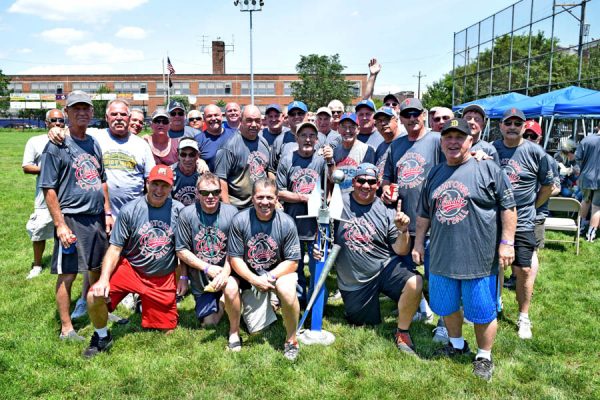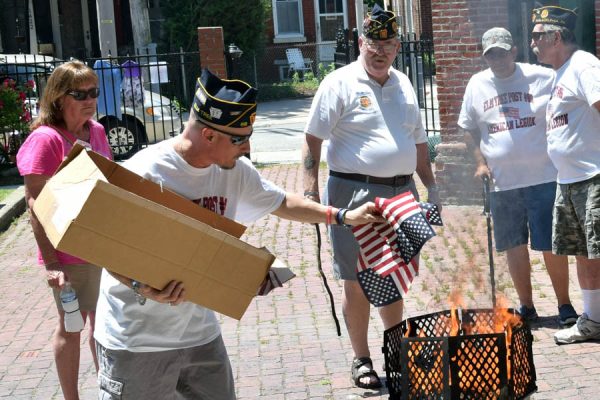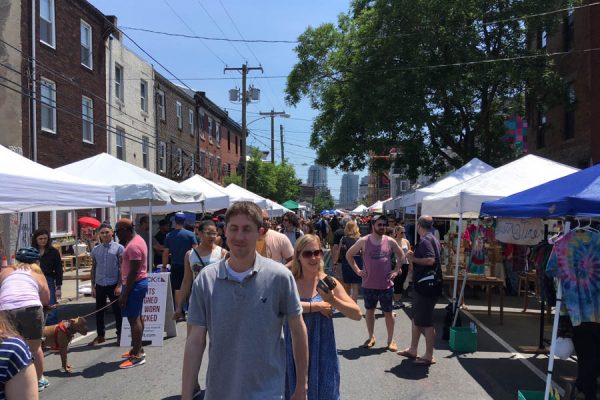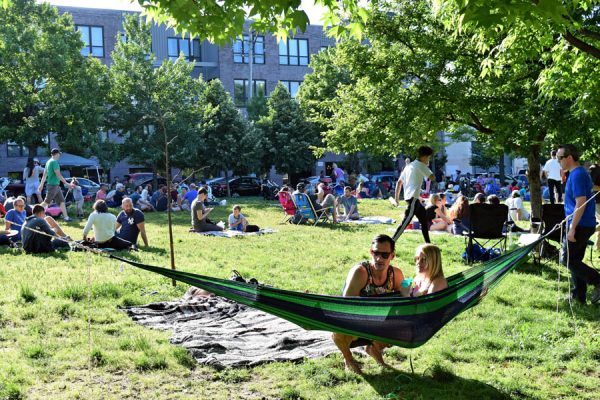Sell Toxic Real Estate: An Exclusive Broker’s Guide
Want to get rich in real estate? What if I told you all you have to do is wait until toxic factories close and then sell houses nearby? It’s that simple. Skip the CD-ROM starter kit, the classes and the seersucker suit. And don’t feel queasy about it. Courts and the state support you 100 percent.
![[Map of 80 properties in zip code 19122 registered with the Pennsylvania Department of Environmental Protection’s Environmental Cleanups & Brownfields Program. Source: . ]](https://spiritnews.org/wp-content/uploads/2016/11/19122-Brownfields-900x600.jpg)
[Map of 80 properties in zip code 19122 registered with the Pennsylvania Department of Environmental Protection’s Environmental Cleanups & Brownfields Program. Source:
80 properties in zip code 19122 have undergone government-funded cleanups as part of the state’s Environmental Cleanups and Brownfields program. A 2010 study by sociologist Diane Sicotte puts Kensington fourth on a list of the region’s most polluted areas.
But Kensington differs from the areas that outrank it on the list like Camden City and Falls Township in that home values here have consistently gone up since the 1990s. Median home value in 19122 increased from an average of around $55,000 in 2000 to around $130,000 in 2014. Math by research firm Boxwood Means shows about $21 million in real estate transactions in this zip code each year.
Maybe homebuyers care less about their health now than before. Or maybe area-specific toxicity information is hard to get and people don’t have it. Maybe they don’t know they should have it.
The former Sovereign Oil site near Berks and American Streets became one of the highest profile local environmental stories of Philly in the 1990s: a good test case for getting a sense of what information is available to the public regarding such cleanups and how easily the public can get that information.
Sovereign produced cleaning products and stored antifreeze and motor oil at the site. A Philadelphia Common Pleas Court judge shut the facility down in 1990 after it caught fire several times. 400 gallons of petroleum also spilled under circumstances later described as “highly suspicious” by a state inspector. The spill went unattended for at least one day.
A 100 sq. ft. area near the facility’s loading dock was covered with “hardened, slightly sticky spill” at a depth of between two and four inches. Several crushed containers labeled “polyisobutylene” lay nearby.
After Sovereign closed, another inspector reported that four inches of red oil had collected on a pump room floor. Four feet of “what appears to be motor oil” had gathered on the floor in another room.
In view of the press, a fire captain drove a pole into the dirt on site by hand to show that chemicals had liquefied nearby soil to a depth of at least six feet.
Ed Rendell worked for a law firm that represented Sovereign before he became Philadelphia’s mayor in 1992, according to his correspondence with the state. His administration largely avoided the affair.
The plant lay vacant for years and conditions worsened. Oily soil washout made American Street slick during heavy rains. The US Coast Guard got involved once toxins passed off the site through the sewer system and into the Delaware River.
Sovereign’s owners claimed they couldn’t afford to clean the site and applied unsuccessfully for bankruptcy. City Council recommended prosecution by the Attorney General and the Department of Environmental Protection. Neither took action.
The City ultimately bought the property itself and demolished the buildings on site. They did a $4 million cleanup and then sold it. A 1998 City ordinance that documents how that all happened is on file at the Philadelphia Zoning Archive. But the specific section with details about the cleanup is missing.
Philadelphia’s Law Department had delayed its response to Spirit News’ request for those cleanup plans twice when this article printed, citing “[b]ona fide staffing limitations” and other issues. The Department also must ensure that law requires them to release the information.
Geologist Anthony Sauder and environmental consulting firm Pennoni Associates worked on the Sovereign cleanup. Neither responded to requests for related documents.
Sauder, however, wrote an article about the project in a journal called Environmental Permitting and Regulation, now defunct. Colorado Mesa University supplied this article for Spirit News’ report.
Remediators scooped out more than 40,000 gallons of contaminated sludge and water and 900 cubic feet of contaminated soil, Sauder writes. Debate persisted over whether “disturbed soils could remain on site and be covered.” Project supervisors concluded it would be:
economical if the [remaining] product-saturated soils remained in place and would only be removed where they directly impacted construction… The entire site would be covered with either asphalt in the parking area or a concrete floor slab under the proposed building.
Hence, the concrete beach visible today at the base of the food distribution warehouse, which replaced Sovereign’s operation after the cleanup.
The new owners initially filed no paperwork about the cleanup when they bought the property. State regulators threatened to revoke deal-sweetening public payouts until they did so.
Pennsylvania law requires that developers in these situations send site cleanup reports to both local governments and the state. Though the City didn’t have Sovereign’s report immediately available, the state did. Spirit News got it from the Norristown office of the Department of Environmental Protection, along with other related documents.
According to that report, soil at the intersection of 3rd and Berks Streets has in the past registered higher levels of volatile organic compounds (VOCs) than anywhere else at the former Sovereign site. A “VOC” can be any of about 70 chemicals, many of which prove dangerous to human health in the short and long terms, primarily through inhalation.
![[A map of VOC concentrations at the Sovereign site from Pennoni’s report. Source: The Pennsylvania Department of Environmental Protection.]](https://spiritnews.org/wp-content/uploads/2016/11/Screen-Shot-2016-11-30-at-1.36.43-PM-883x600.jpg)
[A map of VOC concentrations at the Sovereign site from Pennoni’s report. Source: The Pennsylvania Department of Environmental Protection.]
We rented a handheld VOC testing device and conducted our own amateur tests of surface-level soil on public land around the site. Results showed VOC levels close to the state-mandated limit for residential use near the intersection of 3rd and Berks Streets. A full report on these tests is available with the online version of this report.
We could find no evidence of further monitoring at Sovereign after 2002.
The Delaware River Basin Commission in 2006 reported known carcinogens at the site.
Don’t expect to hear much about contamination from the private sector either. Private land sellers in Pennsylvania must disclose “material defects” at a given property before sale. But law requires no additional “investigation or inquiry in an effort to complete the property disclosure statement,” according to the Pennsylvania Real Estate Commission.
So the more you know about the land you sell, the more risk you take when you sell it. Knowledge of contamination can only increase your legal liability as a seller.
Example: ADK Development built and sold homes at Port Richmond Gate near 2600 Tioga Street in the early 2000s. ReMax Millennium brokered many of the sales. Homebuyers sued these firms, claiming they knowingly hid evidence of soil toxicity.
The homeowners normally wouldn’t have had much of a case. But ADK had hired consultants to test site soil toxicity before construction. According to the legal complaint, consultants found carcinogens in soil between one and two feet down. Soil at that depth contained bits of “railroad tracks, metal and slag.” Beneath that:
depending on the location from 3 – 10 feet below the surface was incinerator ash… [T]he ash consisted inter alia of bottles, broken china, small pieces of household furniture, small pieces of metal, unburned floor tile bricks and other types of common household items that had been incinerated in the past.
State soil tests at the site later showed arsenic levels up to 168-times the legal limit for residential construction and lead levels up to 39-times the limit. A court appraisal showed that ADK cost homebuyers millions in lost property value by hiding evidence of this contamination.
It’s not just that disclosure rules in this area are lax. If the Sovereign and ADK cases show anything about courts’ attitudes on these issues, it doesn’t much matter whether land sellers follow these lax rules or not.
ADK applied for bankruptcy. But the attorney assigned to handle their request claimed their “insolvency resulted from [the] improper siphoning of funds” after Port Richmond Gate’s construction was completed and they had transferred “all profits from the development site” elsewhere. Six years later, the state’s case against ADK recently reached an appeals court.
Check your address on the federal “Cleanups in My Community” site at <https://www.epa.gov/cleanups/cleanups-my-community> and the state’s eFacts site at <http://www.ahs.dep.pa.gov/eFACTSWeb/criteria_site.aspx> for information about nearby environmental cleanups.
![[Photo of the food distribution warehouse at the former Sovereign site. Credit: Kristi Petrillo]](https://spiritnews.org/wp-content/uploads/2016/11/Former-Sovereign-Site-900x579.jpg)
![[Photo of MiniRae 3000.]](https://spiritnews.org/wp-content/uploads/2016/11/MiniRae-624x600.jpg)






